The U.S. economy has always been a beacon of resilience and innovation. However, recent data paints a picture of an economy under strain. From soaring prices to increasing financial insecurity among the populace, there are clear signs that immediate action is needed to stabilize and rejuvenate the nation’s economic health.
Understanding the Economic Landscape
- Rising Prices and Stagnant Wages: One of the most glaring indicators of economic stress is the sharp increase in prices across various sectors. From a 34% increase in electricity costs to a 42% surge in gasoline prices, consumers are feeling the pinch. Essential commodities like eggs and milk have seen a rise of 28% and 23% respectively. Even non-essential items like cars have seen a 17% price hike. This inflationary trend, with an overall rate of 15% from 2020 to 2023, is eroding the purchasing power of the average American. Compounding this issue is the fact that wage growth is lagging behind inflation by more than 3%, further squeezing household budgets.
- Financial Insecurity: The price hikes are even more concerning when viewed in the context of financial security. A staggering 55% of workers are living paycheck to paycheck, and 52% lack a three-month savings cushion. This means that over half of the population is just one unexpected expense away from financial turmoil. In fact, 57% of Americans can’t cover a $1,000 emergency expense from their savings.
- Savings Crisis: The savings crisis is a multifaceted issue that has deep implications for the future economic stability of individuals and families. When 33% of U.S. consumers report not saving any money, it not only indicates a lack of immediate financial security but also suggests potential challenges in retirement, housing, and future investments. The fact that 60% of this group has no savings at all is even more alarming. Without a safety net, these individuals are vulnerable to unforeseen financial shocks, which can lead to debt accumulation, bankruptcy, or even homelessness.
- Societal Impact: Economic challenges don’t exist in a vacuum; they have profound societal ramifications. The 17% increase in deaths from drug overdoses is a tragic testament to the despair and hopelessness that can accompany financial insecurity. When people feel trapped by their economic circumstances, they may turn to substances as a way to cope, leading to a vicious cycle of addiction and further financial strain.
- Government Spending and its Implications: The government’s role in the economy is undeniable, but with that role comes the responsibility of prudent fiscal management. The $4 trillion in excess spending since 2020, with $2 trillion in 2023 alone, is a significant figure that raises concerns. Such high levels of government expenditure can lead to inflationary pressures, as more money chases the same amount of goods and services. Moreover, excessive government borrowing to fund this spending can crowd out private investment, leading to higher interest rates and reduced capital formation. The U.S. debt has now reached a staggering $33.47 trillion, a figure that not only impacts the present economic scenario but also places a debt burden on future generations, potentially hampering growth prospects and leading to long-term economic challenges.
Solutions for a Brighter Economic Future
- Embrace Energy Diversity with Minimal Government Intervention: In line with libertarian principles, the government should reduce regulations and barriers that hinder the exploration, production, and distribution of diverse energy sources. This includes nuclear, hydrogen, natural gas, oil, coal, and solar. By allowing the free market to determine the most efficient and cost-effective energy solutions, we can ensure a reliable energy future while also fostering innovation and competition.
- Financial Literacy: A national campaign promoting financial literacy can help individuals make informed decisions about savings, investments, and expenditures. This can be introduced at school levels and continued through community programs.
- Support Small Businesses – The Economic Powerhouses: Small businesses are the backbone of the economy, often described as its lifeblood. They provide local jobs, foster community growth, and drive innovation. However, they often face challenges that larger corporations can more easily navigate, such as access to capital, regulatory burdens, and market volatility. To truly support these economic powerhouses, the government can take several steps:
- Tax Incentives: Offering tax breaks specifically tailored for small businesses can provide them with more capital to reinvest in their operations, hire more staff, or expand their offerings.
- Access to Capital: Streamlining the process for small business loans and offering competitive interest rates can ensure that these businesses have the necessary funds to start, operate, and grow.
- Reducing Bureaucratic Hurdles: Simplifying the regulatory environment can reduce the time and resources small businesses spend on compliance, allowing them to focus more on their core operations.
- Training and Resources: Providing resources, workshops, and training can equip small business owners with the skills and knowledge they need to thrive in a competitive market.
- Balancing the Federal Budget and Reducing Debt: It’s imperative for the government to prioritize fiscal responsibility. This means revisiting and potentially cutting non-essential expenditures, streamlining operations, and increasing efficiency. Balancing the budget should be a top priority, followed by creating a strategic plan to pay down the national debt. This not only ensures the country’s financial stability but also restores confidence among investors and international partners.
- Encourage Savings and Fair Banking Practices: Tax incentives for savings, especially for low and middle-income groups, can help address the savings crisis. Additionally, promoting employer-sponsored retirement plans can secure the financial future of many. Furthermore, no bank that is insured by the FDIC should be allowed to pay less than half of the Federal Funds rate for interest on savings accounts. This ensures that consumers are rewarded fairly for their trust in the banking system and encourages more people to save.
- Address Mental Health and Suicide Prevention: The rise in drug overdose deaths and the alarming rates of suicide indicate deeper societal issues. Investing in mental health infrastructure, awareness campaigns, and making treatments accessible can help address this. Specific programs focused on suicide identification and prevention are crucial to ensure that individuals at risk receive timely intervention and support.
- Trade and Foreign Policy: Revisiting trade policies to ensure they are fair and beneficial can help stabilize prices. Additionally, fostering good foreign relations can open up new markets for U.S. products.
In conclusion, while the current economic indicators might seem daunting, the U.S. has faced and overcome bigger challenges in the past. With a combination of informed policies, public-private partnerships, and a focus on sustainability and financial security, the U.S. can chart a course towards a prosperous future.


